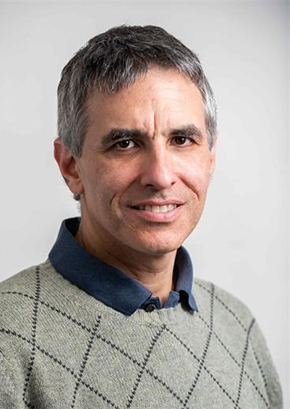THE THIRD INTERNATIONAL SYMPOSIUM
ON THERMAL-FLUID DYNAMICS 2022
(ISTFD 2022 )

THE THIRD INTERNATIONAL SYMPOSIUM
ON THERMAL-FLUID DYNAMICS 2022
(ISTFD 2022 )

Marc Hodes
Department of Mechanical Engineering,
Tufts University, Medford, MA, USA
Marc Hodes received his MS at the University of Minnesota in 1994 and his PhD at the Massachusetts Institute of Technology in 1998. He then spent a decade at Bell Laboratories in Murray Hill, NJ, USA. He is currently in the Department of Mechanical Engineering at Tufts University in Medford, MA, USA, where he is a Professor and the Director of Graduate Studies. His present research interests are on superhydrophobic surfaces, aerogels and singlet oxygen-based disinfection. The research on superhydrophobic surfaces is in collaboration with applied mathematicians at Imperial College London in the context of The Red Lotus Project. He is also the Chief Technology Officer (CTO) of Transport Phenomena Technologies, LLC, which was spun out of Tufts University in 2017.
Title: Transport Phenomena in the Drying of Aerogels
Abstract: Aerogels are porous nanomaterials, aptly referred to as “frozen smoke,” and possess a suite of unique properties; e.g., the lowest density of any solid-containing material and surface area-to-weight ratios approaching 1000 square meters per gram. Their pore sizes are, typically, between 2 nanometers and 100 nanometers. Consequently, Knudsen numbers characterizing air within them are high, stifling heat transfer and resulting in super-insulation. Nonetheless, aerogel insulation is confined to niche markets, such as insulation of liquified natural-gas pipelines, where cost is a secondary consideration. A primary reason that aerogels are up to an order-of-magnitude more expensive than conventional insulation materials is the cost of drying them, whereby the liquid solvent in the pores after gelation is replaced by air.
A common technique for drying aerogels is to pump supercritical carbon dioxide over them in order to avoid capillary forces along liquid-vapor menisci that would compromise their delicate nanoskeleton. I will elucidate the supercritical drying step of aerogel manufacture. Next, I will provide the momentum and mass transport equations governing such drying, where a porous region, i.e., the aerogel, must be coupled to an open region, i.e., the solvent-absorbing carbon dioxide being pumped over it. I will discuss challenges associated with the solution of this coupled momentum and species transport problem, focusing on the fact that key thermophysical properties of solvent-carbon dioxide solutions, i.e., molecular diffusion coefficient, density and viscosity, are not known across the full range of solvent concentration, and the permeability of the nanoskeleton is need of better characterization. Then, I will present the apparatuses in our laboratory to measure the foregoing properties, and a related experiment to measure the drying kinetics. My presentation will conclude with a synopsis of our state of understanding of the the drying process and a glimpse at some more recent work on freeze drying of aerogels.